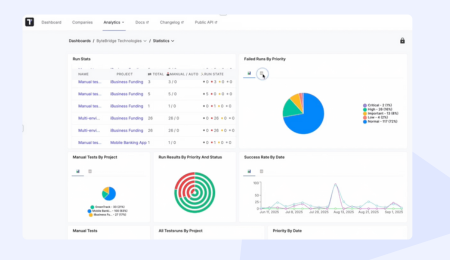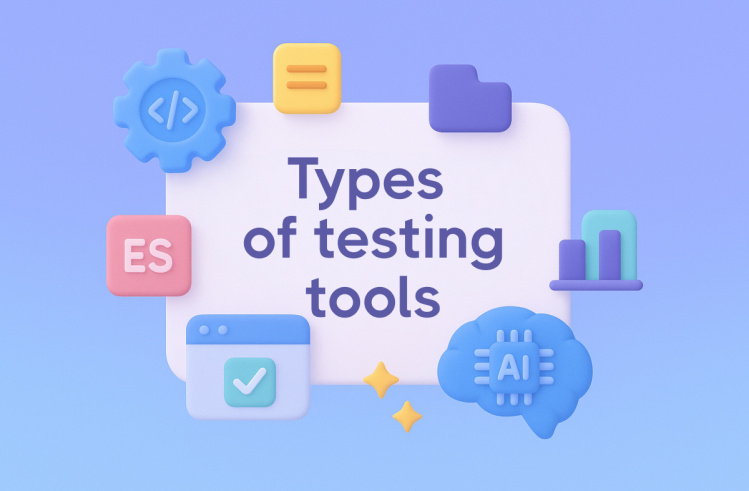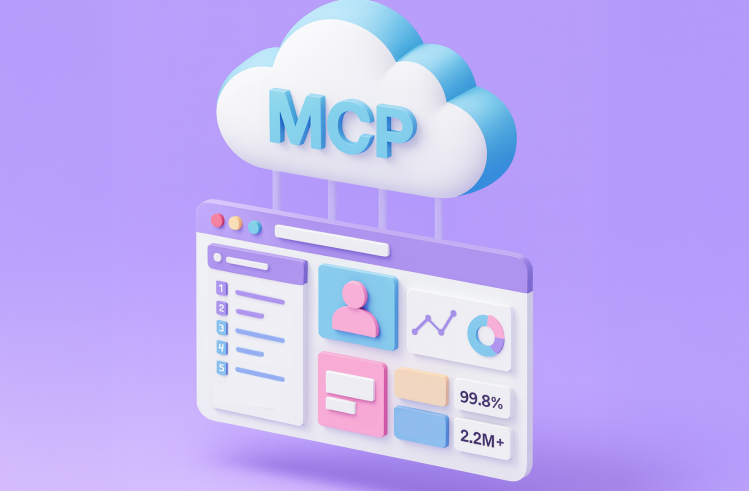Kristen introduces her expertise, sharing her extensive knowledge from years of experience and her publications in the field. The session aims to break down the complexities of the Playwright config file, highlighting its various sections and offering practical examples. Attendees can expect to engage with the material and clarify their questions throughout the presentation.
Key Takeaways
Playwright simplifies test automation without the need for browser drivers.
The configuration file is essential for tailoring tests to specific needs.
Understanding the four main sections of the config file enhances testing effectiveness.
Reasons to Use Playwright
Playwright stands out as a powerful tool for automated testing due to several key features:
No Browser Driver Required: Unlike Selenium WebDriver, which often requires manual updates for browser drivers, Playwright operates directly in the browser, eliminating this hassle.
Support for API and UI Testing: Playwright facilitates both API and UI testing right from the start. API tests are generally quicker and more reliable, making this dual support advantageous.
Cross-Browser Compatibility: It works seamlessly across a variety of browsers including Chromium-based browsers (like Chrome and Edge), WebKit (Safari), and Firefox.
Mobile Browser Testing: While not catering to mobile native testing, Playwright offers emulation of various mobile devices and screen sizes for applications running directly in mobile browsers.
Iframes and Tabs Management: Playwright can easily switch between iframes, tabs, and other browser windows without additional configuration, unlike some alternatives such as Cypress.
API Request Interception and Mocking: This feature allows users to simulate specific scenarios, such as receiving a 500 error, which can be invaluable for testing interfaces without needing a fully functional backend.
Robust Debugging Tools: Users can leverage a range of debugging tools to troubleshoot issues effectively during test execution.
Versatile Programming Language Support: Playwright supports multiple programming languages, including JavaScript, TypeScript, Python, Java, and C, enhancing its usability for diverse developer preferences.
Furthermore, Playwright is highly configurable through its configuration file. While this file contains many options, it can be intimidating initially. Understanding its structure and settings can greatly enhance testing effectiveness, allowing for customized test execution.
The primary sections of the Playwright configuration file are:
Test Configuration: Includes general instructions for executing tests.
Use Section: Contains settings specifically for the tests.
Project Section: Configuration options tailored for individual projects.
Web Server Section: Instructions for locally starting the development environment.
Diving deeper into each section of the configuration file will help maximize the potential of Playwright in any testing scenario.
Overview of Playwright Config File
The Playwright configuration file plays a crucial role in configuring automated tests efficiently. It allows for extensive customization, helping users tailor their test execution environment to meet specific needs. The configuration file is structured into several sections, each serving a distinct purpose.
Key Sections of the Playwright Config File:
Test Configuration Section: This area provides general settings for how tests are executed. Important settings in this section can significantly affect the performance and outcome of the tests.
Use Section: Here, various configuration options related to the tests themselves are specified. This section allows users to set parameters that directly influence test behavior.
Project Section: This part contains settings pertinent to specific projects. Understanding how to structure projects within Playwright is essential for effective organization and management of test cases.
Web Server Section: This section includes directives for starting a local development environment. It is critical for developers working in a local setup to ensure smooth execution of tests.
In total, the default Playwright config file can contain around 79 lines of code, many of which are comments that help clarify the purpose of each setting. While it is possible to run Playwright tests without this configuration file, utilizing it allows for a more refined testing approach, harnessing the full capabilities of Playwright.
The Complete Software Tester
Kristen introduced the importance of comprehensive testing in software development. Her book, “The Complete Software Tester”, targets novice and mid-level testers, guiding them through various testing methodologies, including manual testing, test automation, API testing, and security testing. The aim is to provide a well-rounded foundation in testing practices.
Alongside this, she authored “Logical Fallacies for Testers”, a concise guide that explores logical reasoning and how it integrates into effective software testing. This book can be read over a weekend, making it accessible and practical.
Kristen also created two courses: “Monday Morning Automation” on YouTube and “Postman Essential Training” on LinkedIn Learning. The former is a free resource tailored for beginners in test automation, offering around 53 short lessons to help jumpstart their learning journey. The latter focuses on API testing, detailing setup procedures and testing methods.
In her role as Principal Engineer for Software Testing at Pelocity, Kristen collaborates with various software teams to enhance their quality assurance processes, ensuring the adoption of effective testing frameworks. The following discussion centers on configuring Playwright for successful test automation.
Logical Fallacies for Testers
In software testing, recognizing logical fallacies can enhance the quality of analysis and decision-making. A logical fallacy is a flaw in reasoning, which can lead to incorrect conclusions. Testers should be aware of these fallacies to foster effective communication and critical thinking.
Common Logical Fallacies
Ad Hominem: Attacking the person rather than their argument. This can undermine constructive discussions on testing processes or outcomes.
Straw Man: Misrepresenting someone’s argument to make it easier to attack. When discussing testing techniques, it is crucial to address the actual merits of the techniques rather than a distorted version.
Appeal to Authority: Assuming an argument is true just because an authority figure says it is. While expertise is valuable, it’s essential to evaluate the evidence behind claims.
False Dichotomy: Presenting two opposing options as the only possibilities. This can limit innovative solutions in testing scenarios.
Slippery Slope: Suggesting that a minor action will lead to a chain of events resulting in significant consequences. Testers must evaluate risks without exaggeration.
Applying Fallacy Awareness
By being mindful of these fallacies, testers can improve their problem-solving skills. Avoiding flawed reasoning can lead to better test designs, more accurate defect reports, and clearer communications with stakeholders. Recognizing these pitfalls can also aid in fostering a collaborative environment, encouraging diverse perspectives in testing practices.
Monday Morning Automation
Kristen introduced her presentation on configuring Playwright for effective test automation success. She began by sharing her screen to display a PowerPoint presentation and expressed her enthusiasm for the topic. Kristen is the author of two books: “The Complete Software Tester” and “Logical Fallacies for Testers”, tailored for testers at various skill levels.
She created a free course called “Monday Morning Automation” designed for beginners in test automation. This course consists of approximately 53 short lessons, each lasting around 10 minutes, aimed at helping newcomers understand the fundamentals of test automation. Additionally, she has a LinkedIn Learning course titled “Postman Essential Training” that focuses on API testing techniques.
Kristen emphasized the importance of Playwright for both API and UI automation. Several benefits of using Playwright include:
No Browser Driver Required: Unlike Selenium, Playwright operates directly within the browser, eliminating the need for frequent browser driver updates.
Support for Multiple Browsers: It works with various browsers such as Chromium-based browsers (Chrome, Edge), WebKit (Safari), and Firefox, along with mobile browser testing.
API Request Interception: Playwright can mock API requests, allowing tests to simulate various responses without affecting the actual system.
Debugging Tools: It provides several debugging methods for troubleshooting test failures.
Versatile Programming Language Support: Playwright is compatible with JavaScript, TypeScript, Python, Java, and C.
Kristen noted that Playwright’s configuration file may appear daunting due to the plethora of options available. Initially, the default config file includes 79 lines, many of which are commented for clarity. She highlighted that while it’s possible to run tests without a config file, customizing the configuration can enhance test performance significantly.
The configuration file consists of four main sections:
Test Configuration Section: General settings for test execution.
Use Section: Configuration settings related to tests.
Project Section: Settings specific to individual projects.
Web Server Section: Instructions for starting the local development environment.
Kristen intends to explore each section in detail, focusing on the most common settings and their practical implications for maximizing test effectiveness.
Postman Essential Training
Kristen is excited to present on configuring Playwright for successful test automation. She is the author of two insightful books aimed at software testers: “The Complete Software Tester” and “Logical Fallacies for Testers”. Her first book provides a comprehensive overview for beginners and mid-level testers on various testing types, while the second focuses on logical fallacies relevant to software testing.
In addition to her books, she has created a free YouTube course called “Monday Morning Automation”, which consists of 53 short lessons designed for those new to test automation. She also offers “Postman Essential Training” on LinkedIn Learning, where the focus is on API testing, including setup and key testing aspects.
Key Aspects of Postman Essential Training
Course Structure: The course is structured to cater to learners at all levels, targeting those interested in API testing.
Learning Outcomes: Participants gain an understanding of how to effectively set up and execute API tests, making it easier to ensure software quality.
Accessibility: Providing a free resource helps bring software testing knowledge to a broader audience, benefiting newcomers and seasoned testers alike.
Kristen emphasizes the importance of API testing and its advantages, asserting that it tends to be faster and more reliable than traditional UI testing methods.
Roles and Responsibilities
In the context of the configuration for Playwright, several key roles and responsibilities are outlined:
Kristen’s Role: Kristen is identified as the principal engineer for software testing at Pelocity. Her main responsibility involves collaborating with different software teams to enhance quality processes related to various testing types.
Presentation: During her session, Kristen will address the configuration of Playwright for test automation success. She encourages audience interaction, allowing questions to be posed throughout the presentation.
Educational Contributions: Kristen has authored two significant books aimed at testers, providing essential knowledge for both beginnings and mid-level testers. She also creates courses that cater to those new to automation and focuses on API testing, thus enhancing testers’ skills and understanding.
Blog Management: Kristen manages a blog titled “Think Like a Tester,” which serves as a resource for testers seeking insights and strategies in software testing.
Interaction with Audience: Kristen is open to receiving questions during her presentation, fostering an engaging learning environment while ensuring clarity on the topics discussed.
Playwright Configuration: The presentation encompasses detailed roles pertaining to Playwright’s configuration file, which is pivotal for effective test automation. Each section of the configuration serves specific purposes, allowing for tailored testing approaches.
This structure establishes a framework for effective communication and collaboration within the software testing domain, ensuring clarity and precision in executing testing responsibilities.








